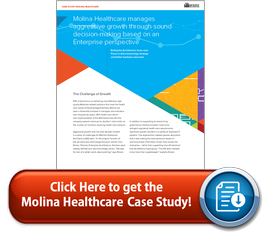Putting Your Best Foot Forward

 Every year, right around this time, a buzz zips through the enterprise architecture community when InfoWorld, Forrester Research and the Penn State University Center for Enterprise Architecture open their collective call for entries for the Enterprise Architecture Awards (a program now in its sixth year). Enterprise architects and business leaders alike snap to attention and reflect on how their organization has leveraged and benefited from EA efforts over the past year. Since we’re about one month out from the deadline for nominations (here’s your heads up that they close on Friday, June 15), we thought it would be instructive and timely to lay out a few baseline tips for what makes up a successful entry, taking into account similarities between past winners that are both Troux customers and unaffiliated role models for the discipline.
Every year, right around this time, a buzz zips through the enterprise architecture community when InfoWorld, Forrester Research and the Penn State University Center for Enterprise Architecture open their collective call for entries for the Enterprise Architecture Awards (a program now in its sixth year). Enterprise architects and business leaders alike snap to attention and reflect on how their organization has leveraged and benefited from EA efforts over the past year. Since we’re about one month out from the deadline for nominations (here’s your heads up that they close on Friday, June 15), we thought it would be instructive and timely to lay out a few baseline tips for what makes up a successful entry, taking into account similarities between past winners that are both Troux customers and unaffiliated role models for the discipline.
1) Focus on business impact.
And to put a finer point on it, measurable impact. This isn’t always possible if an organization is just getting its EA program structured, off the ground and running, but quantifiable results on both the IT and broader business planes make entries exceptionally more impactful and explicable.
As an example on the IT savings layer, in their entry last year, Troux customer Dell conservatively estimated resulting IT savings at $152 million. That’s a hard number to ignore. They also supplemented the IT savings with more qualitative business results in the fact that they transformed their business and services offerings to be optimized for global, end-to-end solutions rather than siloed technology products.
An entry recognized from The Australia Post boasted impressive diversity in measurable impact: Projected IT savings of A$40 million over five years (with A$5 million already realized), estimated annual carbon emission reduction of 6,030 tons and a predicted increase from 1.4 million to 4 million registered customers over the span of a year. For those keeping count, that’s a 186 percent increase in customer base.
Even if you have to rely on estimates or projections to demonstrate business impact, go for it, provided you have the realistic figures and rationale to back it up.
2) Prove innovative thinking.
As we’ve mentioned previously, basic transparency into a company’s IT operations, resources and processes is a major victory. Cost-cutting, eliminating redundant technologies and making smarter IT investments based on that transparency are even more admirable results. But what the judges are looking for more and more every year in this program is reaching the next level – doing something truly innovative that hasn’t been seen in the enterprise environment before. How are you connecting EA to digitization, BYOD, the IoT or, cybersecurity or an even more emergent trend or field?
3) Choose a human face for your story.
Even though this isn’t an awards program recognizing individual achievement and you don’t have to mention specific names, it pays to personify your program and broadly give credit where it’s due. The “face” of your story could be your CIO, your enterprise architect or even a diverse team of experts. Whoever it is, they should embody the collaboration, vision, leadership and other traits that provide the foundation for any strategic business project.
Molina Healthcare’s (another Troux customer) “face” for their entry last year was an eight-member team of enterprise, information and solution architects that work with senior stakeholders leading business units and strategic projects. These eight conduits between IT and the business are the heroes of Molina’s EA (and award submission) success. (click here to listen to their story)
4) Use unique industry variables to your advantage.
To some extent, most IT organizations face similar questions, end goals, trials and tribulations. But the market obstacles that face each business can be very different and exclusive. Take Allstate Insurance’s 2014 entry for example – it brought in references to rapidly-changing trends like telematics and the connected car. The chances of another candidate being able to play off those exact same trends were slim to none. What makes your industry unique and forces your EA team to be more creative, flexible, agile or business savvy?
5) If you can bring your business counterparts along for the ride, all the better.
We’re going to reach back to 2013 for an example of what we mean here. There’s one key point from the description of Cisco’s entry that’s uber-impressive: “[The EA practice] has also expanded the use of the model to support other parts of the business, moving everyone toward a shared business outcome. Going forward, Cisco plans to connect the business architecture initiative to other planning functions.”
Believe it or not, EA can apply to integral parts of running a company outside of the IT realm. If you find yourself applying or extending those same principles to achieve success in other business processes and functions, include that in your entry to give it another dimension.
So there you have it – a few pieces of wisdom we’ve picked up over our years of participating in the Enterprise Architecture Awards. Best of luck in your submissions; we’ll see you in the arena!



 A couple weeks ago we held our annual Troux Worldwide Conference, inviting customers and partners from across the country and even the world to meet us in our hometown of Austin, TX. We hosted customers from healthcare to banking, from public sector to consumer packaged goods. Aside from the compelling conversation, fantastic food and inspiring keynotes from the likes of
A couple weeks ago we held our annual Troux Worldwide Conference, inviting customers and partners from across the country and even the world to meet us in our hometown of Austin, TX. We hosted customers from healthcare to banking, from public sector to consumer packaged goods. Aside from the compelling conversation, fantastic food and inspiring keynotes from the likes of 

 In today’s global, hyper-competitive economy, you’re seeing all kinds of heated races to be the first to digitize an industry. You’ve got Uber battling Lyft to digitize (and displace) the traditional taxi industry. Apple, Google, PayPal, Square and others are slugging it out in a race to digitize the majority of retail transactions. Even seemingly mundane industries like shipping and storage – with Austin tech comrades
In today’s global, hyper-competitive economy, you’re seeing all kinds of heated races to be the first to digitize an industry. You’ve got Uber battling Lyft to digitize (and displace) the traditional taxi industry. Apple, Google, PayPal, Square and others are slugging it out in a race to digitize the majority of retail transactions. Even seemingly mundane industries like shipping and storage – with Austin tech comrades 
 For decades, CIOs have been fighting for a seat at the executive table. Fighting to be heard, fighting to be a trusted advisor to the CEO, fighting to be regarded as a true C-level participant. It hasn’t been until the last few years that
For decades, CIOs have been fighting for a seat at the executive table. Fighting to be heard, fighting to be a trusted advisor to the CEO, fighting to be regarded as a true C-level participant. It hasn’t been until the last few years that 
 Implementing an effective enterprise architecture program is about more than just selecting a tool to aggregate and visualize data. As an EA solutions provider, we talk to a lot of organizations in the early stages of implementation, which gives us a unique, clean-slate perspective on the selection process. Frankly, the most obvious misstep that we see is an emphasis on the functionality of the tool versus what it can ultimately accomplish toward real business success.
Implementing an effective enterprise architecture program is about more than just selecting a tool to aggregate and visualize data. As an EA solutions provider, we talk to a lot of organizations in the early stages of implementation, which gives us a unique, clean-slate perspective on the selection process. Frankly, the most obvious misstep that we see is an emphasis on the functionality of the tool versus what it can ultimately accomplish toward real business success.
 Toward the end of 2014 an American legend walked off-stage. Stephen Colbert wrapped his final episode of the pseudo-politically-charged Colbert Report before preparing to take over David Letterman’s Late Show post. I’m personally sad to see him go, as he brought political awareness to the masses, albeit it through a comedic lens. Throughout all the laughs, sarcasm and pageantry, one thing was certain: Colbert’s favorite pastime was
Toward the end of 2014 an American legend walked off-stage. Stephen Colbert wrapped his final episode of the pseudo-politically-charged Colbert Report before preparing to take over David Letterman’s Late Show post. I’m personally sad to see him go, as he brought political awareness to the masses, albeit it through a comedic lens. Throughout all the laughs, sarcasm and pageantry, one thing was certain: Colbert’s favorite pastime was 
.jpg) As you return from your holiday break, we certainly hope the New Year finds you happy, healthy and reenergized. It’s a fresh start — the point on the calendar at which many organizations really get rolling on selecting and implementing plans, IT tools and approaches, including those companies that will be starting out with or continuing to build on a foundation of enterprise intelligence.
As you return from your holiday break, we certainly hope the New Year finds you happy, healthy and reenergized. It’s a fresh start — the point on the calendar at which many organizations really get rolling on selecting and implementing plans, IT tools and approaches, including those companies that will be starting out with or continuing to build on a foundation of enterprise intelligence.
.jpg) First and foremost, wishes for a very happy holiday season to you and yours from all of us at Troux!
First and foremost, wishes for a very happy holiday season to you and yours from all of us at Troux! 
 Let’s talk about an oft-maligned buzzword…innovation. By definition, it’s “a new method, idea, product, etc.” Be honest, how difficult do you find it to innovate and truly create something new and impactful in today’s world? If you feel like you’re lagging, you are not alone. The reality is that it takes time and resources to properly evaluate where innovation is needed, set goals and deliver on promises. The complexity and pace of change in today’s digital world make that difficult. It’s a noteworthy accomplishment just to keep up. To that end, let’s look at nailing innovation — innovating with purpose — from an IT perspective.
Let’s talk about an oft-maligned buzzword…innovation. By definition, it’s “a new method, idea, product, etc.” Be honest, how difficult do you find it to innovate and truly create something new and impactful in today’s world? If you feel like you’re lagging, you are not alone. The reality is that it takes time and resources to properly evaluate where innovation is needed, set goals and deliver on promises. The complexity and pace of change in today’s digital world make that difficult. It’s a noteworthy accomplishment just to keep up. To that end, let’s look at nailing innovation — innovating with purpose — from an IT perspective.
 Ahh, the sage words of Vanilla Ice. The man may have known little about 90s hairstyles and fashion, but he (perhaps unknowingly) nailed it when it comes to advice for the new order of IT organizations. However progressive, proactive and well-oiled we think we are, I’m going out on a limb and predicting that a vast majority of our readers can still relate to struggles with strategic planning in today’s constantly in motion business world. A recent Forbes article,
Ahh, the sage words of Vanilla Ice. The man may have known little about 90s hairstyles and fashion, but he (perhaps unknowingly) nailed it when it comes to advice for the new order of IT organizations. However progressive, proactive and well-oiled we think we are, I’m going out on a limb and predicting that a vast majority of our readers can still relate to struggles with strategic planning in today’s constantly in motion business world. A recent Forbes article, 
 Troux’s CTO, Bill Cason, hosted a webinar that looked at capability-based investment planning. The 20-minute session reviewed how decision makers use capability modeling to better integrate business and strategic IT planning for improved operations, competitiveness and value.
Troux’s CTO, Bill Cason, hosted a webinar that looked at capability-based investment planning. The 20-minute session reviewed how decision makers use capability modeling to better integrate business and strategic IT planning for improved operations, competitiveness and value.

 You have intelligent people in your organization. You hire the best engineers, architects, IT managers and executives. Why insult their intelligence by providing them with tools built for the 90’s? There was a time not that long ago when fluency with Excel was a measurement of your business acumen, but today seven year olds are creating spreadsheets for daily chore charts and tracking soccer scores. Is this still an appropriate way to keep tabs on, understand and run your business in today’s digital world?
You have intelligent people in your organization. You hire the best engineers, architects, IT managers and executives. Why insult their intelligence by providing them with tools built for the 90’s? There was a time not that long ago when fluency with Excel was a measurement of your business acumen, but today seven year olds are creating spreadsheets for daily chore charts and tracking soccer scores. Is this still an appropriate way to keep tabs on, understand and run your business in today’s digital world?
